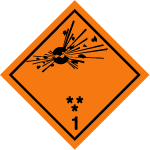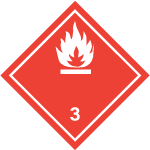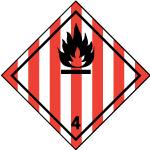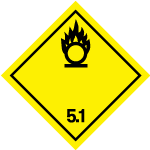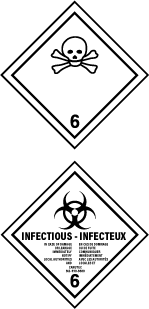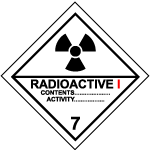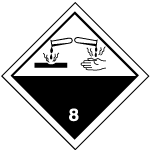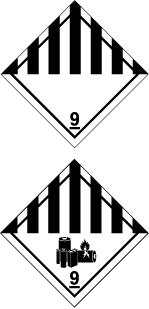Transportation of Dangerous Goods (TDG) - 9 Classes
On this page
What is the purpose of the TDG Act and Regulations?
Back to topThe purpose of the Transportation of Dangerous Goods (TDG) Act and Regulations is to promote public safety when dangerous goods are being imported, offered for transport, handled, or transported by road, rail, air, or water (marine). TDG also establishes safety requirements.
Note: The information below is provided as guidance only and is for the transportation of dangerous goods by road. Always check the TDG Act and Regulations to ensure compliance.
Please also see the following documents in this series:
- Transportation of Dangerous Goods (TDG) - Overview (Road)
- Transportation of Dangerous Goods (TDG) - Training (Road)
- Transportation of Dangerous Goods (TDG) - Classification (Road)
- Transportation of Dangerous Goods (TDG) - "Special Case” and “Special Provision” Exemptions (Road)
- Transportation of Dangerous Goods (TDG) - Dangerous Goods Marks or Dangerous Goods Safety Marks (Road)
- Transportation of Dangerous Goods (TDG) - Reporting Requirements
- Transportation of Dangerous Goods (TDG) - Emergency Response (Road)
- Transportation of Dangerous Goods (TDG) - Means of Containment (Road)
- Transportation of Dangerous Goods (TDG) - Segregation of Means of Containment (Road)
- Transportation of Dangerous Goods (TDG) - Shipping Documents (Road)
How will I know what class a substance has been assigned to?
Back to topDangerous goods are classified into 9 classes, based on the substance’s characteristics and properties. These criteria are outlined in the TDG Regulations.
Assigning a substance into a hazard class is usually done by the consignor. The person deciding the classification must be competent, meaning they have the education, training, and experience required for the task. Some substances have been assigned classes in the TDG Regulations.
For more information on how classification works, please see OSH Answers include.
What are the nine TDG classes and their hazards?
Back to topAlways consult the TDG Regulations for full details on classes, divisions, and exemptions. This table provides a general overview of each class.
| Class | Hazard | Examples |
| Class 1 Explosives | There are six divisions in this category. To be included, the substance or article has the ability to be a mass explosion, fragment projection, fire hazard (along with a minor blast or projection hazard), may ignite or initiate during transport, be very insensitive with a mass explosion hazard, or extremely insensitive with no mass explosion hazard. |
|
| Class 2 Gases | There are three divisions: flammable gases, non-flammable and non-toxic gases, and toxic gases. Aerosols under UN 1950, AEROSOLS may be transported as flammable or non-flammable or non-toxic gases, depending on the properties of the aerosol. |
|
| Class 3 Flammable Liquids | Based on a liquid’s flash point and other properties, substances are included in this class if they are expected to be able to catch fire at common temperatures. |
|
| Class 4 Substances/ Products include: Flammable Solids; Substances Liable to Spontaneous Combustion; Substances That on Contact with Water Emit Flammable Gases (Water-reactive Substances) | Class 4 has three divisions: flammable solids, substances liable to spontaneous combustion, and water reactive substances. These substances may cause fire (through friction), become explosive when in contact with water, become explosive even with contact with oxygen (air), or undergo a reaction that will result in a stronger exothermic reaction (a reaction that releases heat). For example, Class 4.2 Substances liable to spontaneous combustion includes substances that will ignite within 5 minutes of coming into contact with air. |
|
| Class 5 Oxidizing Substances including Organic Peroxides | The two divisions are oxidizing substances and organic peroxides. These substances may explosively decompose, burn rapidly, be sensitive to impact or friction, react dangerously with other substances, or cause damage to the eyes. |
|
| Class 6 Toxic and Infectious Substances | The two divisions are toxic substances and infections substances. Substances are included in class 6 if they can cause death or serious injury or harm to human health if swallowed, inhaled, or in contact with skin. Medical or clinical waste may also be classified as an infectious substance if they contain regulated properties. | Toxic substances examples:
Infectious substances examples:
|
Class 7 Radioactive Materials Category I – White | Radioactive materials are classified in accordance with the Packaging and Transport of Nuclear Substances Regulations 2015. Class 7 Radioactive material has no divisions or packing groups. Instead, there are three categories based on the maximum radiation dose exposure from the packages. The three categories are identified with the following labels:
Radioactive materials emit invisible radiation that can cause serious health effects. High radiation levels can cause reduced blood count, nausea, fatigue, hair loss, etc. Small amounts of radiation received over a long period may cause long-term health effects such as cancer and genetic mutations. |
|
| Class 8 Corrosive Substances | There are no divisions in this class. Substances are included in Class 8 if they are known to cause injury to the skin such as burns, destruction (thickness), or lesions. Substances that cause corrosion of steel or aluminum surfaces are also included in this TDG class. |
|
Class 9 Miscellaneous Products, Substances or Organisms Class 9 Lithium batteries | Substances are considered Class 9 when they are listed in column 3 of Schedule 1 in the TDG Regulation, or by other inclusions and exclusions as defined in the regulations. Substances include those that present a danger sufficient to be included in the TDG regulations, but which cannot be assigned to any other class. |
|
What are the dangerous goods marks or dangerous goods safety marks for each class?
Back to topRecently, the TDG Regulations were amended. The definition of “dangerous goods safety mark” was withdrawn from the TDG Regulations. However, the TDG regulations and many Transport Canada publications still refer to the former terminology of “dangerous goods safety marks.” Thus, we include both terms in our OSH Answers fact sheet.
The TDG Act defines a “dangerous goods mark” as a symbol, device, sign, label, placard, letter, word, number or abbreviation, or any combination of those things, that is to be displayed to indicate the presence or nature of danger on dangerous goods, or on a means of containment or means of transport used in importing, offering for transport, handling or transporting dangerous goods.
The size, shape and colour of the required dangerous goods marks or dangerous goods safety marks are outlined in the TDG Regulations.
The following table shows common dangerous goods marks or dangerous goods safety marks for each class. To view all the required dangerous goods marks or dangerous goods safety marks, please see the Appendix in Part 4 of the TDG Regulations.
| Class | Sample Dangerous Goods Mark(s) or Dangerous Goods Safety Mark(s) |
| Class 1 Explosives |
Sample shows: Class 1.1., 1.2 and 1.3 |
| Class 2 Gases |
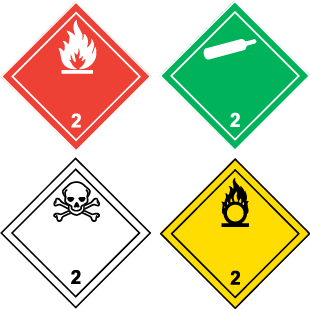 Samples show: Class 2.1 Flammab |
| Class 3 Flammable Liquids |
Sample shows: Class 3 Flammable liquids |
| Class 4 Substances/Products include: Flammable Solids; Substances Liable to Spontaneous Combustion; Substances That on Contact with Water Emit Flammable Gases (Water-reactive Substances) |
Sample shows: Class 4.1 Flammable solids |
| Class 5 Oxidizing Substances, including Organic Peroxides |
Sample shows: Glass 5.1 Oxidizing substances |
| Class 6 Toxic and Infectious Substances |
Samples show: Class 6.1 Toxic substances; Class 6.2 Infectious substances |
Class 7 Radioactive Materials Category I – White |
Sample shows: Class 7 Radioactive materials, |
| Class 8 Corrosive Substances |
Sample shows: Class 8 Corrosives |
| Class 9 Miscellaneous Products, Substances or Organisms |
Samples show: |
- Fact sheet first published: 2021-02-15
- Fact sheet last revised: 2025-01-21

